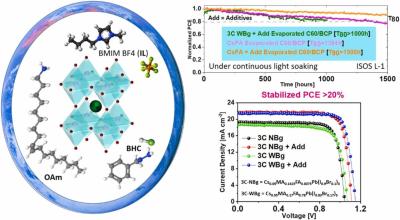Researchers develop new approach for lead-free capping materials
Researchers from Nanyang Technological University, Singapore (NTU Singapore) and the Institute of Materials Research and Engineering (IMRE) at the Agency for Science, Technology and Research (A*STAR) in Singapore have developed a method for capping materials based on non-toxic metals being used in the manufacture of perovskite solar cells.
(Left) A diagram showing the different layers of the perovskite solar cell capped with the zinc-based capping material fabricated by the researchers. (Right) The dotted green rectangle indicates the active region of the perovskite solar cell that captures sunlight and converts it to electricity. Image: NTU Singapore / Nature Energy
Perovskite solar cells are made of several layers of materials, including a perovskite layer that harvests light and a capping layer. The capping layer is coated onto the perovskite layer to protect the solar cell from environmental stresses such as heat and moisture and to boost the performance of the cell. To ensure that the capping layer is compatible with the underlying perovskite layer, researchers typically use an approach called the half precursor (HP) method to fabricate the capping layer. One of the precursor chemicals is first deposited on top of the perovskite layer which provides the other precursor. Through a process known as cation exchange reaction, the deposited precursor then reacts with lead ions present in the perovskite layer beneath to form a lead-based chemical compound that makes up the capping layer. As a result of the HP method, lead is also present in the protective capping layer. A method that enables non-toxic metals to be used in the capping layer could be a game-changer for perovskite solar cells.








